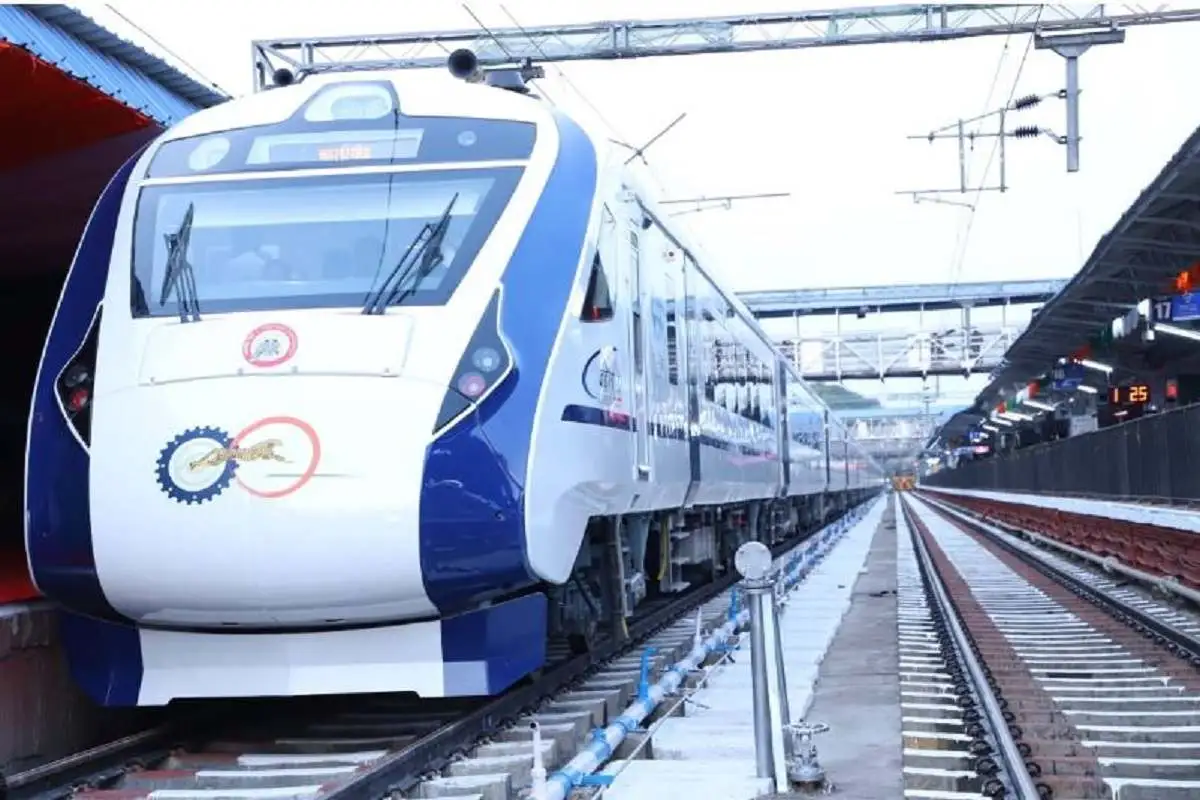
Prime Minister Narendra Modi on May 18 flagged off the Puri-Howrah Vande Bharat Express. Odisha celebrated the launch of its first fully indigenous-built Vande Bharat Express Train, a landmark achievement of the Make in India initiative.
The train runs between Puri, the abode of Lord Jagannath, and Howrah, West Bengal’s industrial powerhouse.
Vande Bharat Express revolutionizes the travel experience by offering passengers enhanced speed, superior comfort, and unparalleled convenience. It is likely to promote economic development in the region through a boost in tourism.
Puri is a very popular destination for tourists from West Bengal, as a pilgrimage and a beach resort.
Travel agents believe that the high-speed train will be an instant hit among these travelers.
In the same ceremony, PM Modi laid the foundation for several other railways projects for Odisha worth Rs 8,000 crore.
The redevelopment of Puri and Cuttack railway stations was one of those projects.
The project aims to upgrade the Cuttack station into a world-class facility, responding to the growing needs of the passengers.
Union Railway Minister Ashwini Vaishnaw has announced a budget of Rs 303 crore for this ambitious project.
The upgradation of Cuttack station is part of the larger efforts by the Indian Railways to refurbish railway stations across the country.
The renovation of Cuttack Railway Station holds great significance for both the local community and the railway sector.
The government aims to improve the station’s infrastructure and amenities, creating a world-class facility that matches with international standards.
The redevelopment project is likely to provide a significant boost to the region’s economy and tourism sector.
Vaishnaw, who also attended the launch, highlighted the significant infrastructure development achieved by the railways in Odisha.
This year alone, the railways have built a remarkable 450 km of new rail lines. It was a record compared to the mere 50 km annual average during 2009-14. This substantial expansion of rail infrastructure reinforces Odisha’s connectivity and overall development.
Railways have also started a 162-crore redevelopment project for Puri station to cater to the growing number of visitors.
The plan includes a weather-resistant shelter that will have the capacity to withstand cyclonic winds and a centralized air-conditioned station building, escalators, and improved amenities.
The renovated station will offer facilities such as food plazas, baby feed rooms, shops, modern retiring rooms, and recreational areas. The redeveloped station will also include dedicated spaces for yoga, meditation, and library facilities.
The station building will be designed as a green structure, in line with environmental considerations, with an efficient energy management system.
Additionally, the redeveloped Puri station will incorporate several green initiatives, such as the installation of electric car charging points in the parking bay and an effluent treatment plant to minimize environmental impact.
The platforms will undergo renovations with modern ceilings, lighting, and signage to enhance the overall functionality and aesthetic appeal of the station. Efforts are also being made to ensure smooth traffic flow and adequate parking.
The redeveloped Puri station compound will be ready for public use by January 2025.
The Prime Minister dedicated 100 percent electrification of the rail network in Odisha. It will bring down the operating and maintenance cost, significantly reducing reliance on imported crude oil.
Earlier in March 2023, Railways announced that it has achieved 100 percent electrification of the existing 2,822-kilometer route of the Broad-Gauge network in Odisha.
The electrification of the Broad Gauge networks is likely to reduce travel time by increasing the speed of trains.
The complete electrification of railway lines in Odisha is in line with the target of Railways to become a net zero carbon emitter by 2030.
Source IANS

















